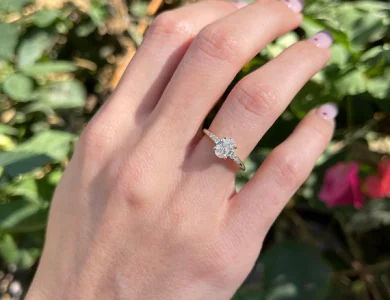Introduction:
In a world where mass-produced fashion dominates, there exists a realm of sartorial excellence known as bespoke tailoring. Crafted with precision and designed to perfection, bespoke suits stand as a testament to the timeless art of custom made suits. This comprehensive guide explores the intricacies of bespoke suits, unveiling the meticulous craftsmanship and attention to detail that elevate them to the pinnacle of sartorial elegance.
Understanding Bespoke Tailoring:
Bespoke tailoring, derived from the term “bespeak” or “to speak for,” represents the epitome of personalized craftsmanship. Unlike off-the-rack garments, bespoke suits are individually crafted to meet the specific measurements, style preferences, and unique characteristics of the wearer. The process of creating a bespoke suit involves a collaborative journey between the client and the master tailor, resulting in a garment that not only fits flawlessly but also reflects the wearer’s personality and taste.
The Consultation: Building a Relationship:
The bespoke journey begins with a consultation—an essential phase where the client and the tailor establish a relationship built on trust and understanding. During this meeting, the tailor delves into the client’s style preferences, lifestyle, and the intended use of the suit. Discussions may revolve around fabric choices, design elements, and specific details that make the suit truly personalized.
The master tailor takes precise measurements, considering not only the standard dimensions but also any asymmetry or unique characteristics of the client’s body. This meticulous attention to detail ensures that the final garment will enhance the natural silhouette of the wearer, providing a level of comfort and fit that is unparalleled.
Choosing the Right Fabric:
Central to the art of bespoke tailoring is the selection of premium fabrics. The range of choices is extensive, encompassing a variety of materials such as fine wools, luxurious silks, and breathable linens. The client, guided by the expertise of the master tailor, selects a fabric that aligns with the purpose of the suit and the desired aesthetic.
For formal occasions, a classic wool suit may be the preferred choice, offering a combination of elegance and durability. In contrast, a summer suit might call for a lighter fabric like linen, ensuring comfort in warmer temperatures. The fabric becomes the canvas upon which the bespoke suit is crafted, and the quality of the material contributes significantly to the overall look and feel of the garment.
The Art of Pattern Making:
Once the fabric is chosen, the master tailor proceeds to create a unique pattern tailored to the client’s measurements. This pattern serves as the blueprint for cutting the fabric, ensuring that each piece aligns precisely with the individual’s body shape. The art of pattern making requires skill and precision, as it sets the foundation for a suit that not only fits impeccably but also exhibits a harmonious flow of proportions.
The Cutting Process: Precision in Every Detail:
Armed with the bespoke pattern, the master tailor meticulously cuts the fabric, taking into account the specific design details and style elements discussed during the consultation. Each piece is cut with precision, considering factors such as the grain of the fabric, pattern matching, and the direction of the fibers. This meticulous approach ensures that the final suit not only fits perfectly but also maintains its structural integrity.
Handcrafting: A Labor of Love:
One of the distinguishing features of bespoke suits is the extensive handcrafting involved in their creation. Skilled artisans painstakingly sew various components of the suit by hand, showcasing their expertise in traditional tailoring techniques. Hand-stitching contributes to the overall durability and flexibility of the garment, allowing it to conform seamlessly to the wearer’s body.
Elements such as the canvas construction of the jacket, hand-sewn buttonholes, and the attachment of collars and lapels exemplify the commitment to craftsmanship in bespoke tailoring. Each stitch is a labor of love, reflecting the artisan’s dedication to creating a suit that transcends mere clothing and becomes a wearable work of art.
Fittings: Iterative Refinement:
The bespoke process involves multiple fittings to ensure that the suit achieves perfection in fit and style. After the initial cutting and assembly, the client undergoes a fitting where the tailor assesses the garment’s drape and fit. Adjustments are made based on the client’s feedback, ensuring that the final suit aligns with their expectations.
Additional fittings may be required to fine-tune details such as sleeve length, trouser break, and overall comfort. This iterative refinement process distinguishes bespoke tailoring from off-the-rack alternatives, allowing for precise adjustments that result in a suit that feels like a second skin.
Personalization: A Symphony of Details:
One of the most enchanting aspects of bespoke suits is the level of personalization they offer. From lapel styles and button configurations to lining choices and monogramming, every detail can be customized to align with the wearer’s taste and preferences. This symphony of details transforms the suit into a unique and individualized masterpiece.
Clients can choose from a range of lapel styles, including notched, peaked, or shawl lapels, each imparting a distinct aesthetic. Button configurations, such as single-breasted or double-breasted, add further customization options. Lining choices, contrasting stitching, and personalized monograms contribute to the creation of a suit that goes beyond mere clothing, becoming a reflection of the wearer’s identity.
The Timeless Elegance of Bespoke Suits:
Bespoke suits, with their meticulous craftsmanship and personalized details, exude a timeless elegance that transcends fleeting fashion trends. The investment in a bespoke suit goes beyond the acquisition of a garment; it is a commitment to quality, individuality, and a sartorial legacy that endures over time. While the process may take weeks or even months, the result is a suit that not only fits perfectly but also tells a story of craftsmanship, tradition, and the artistry of custom tailoring.
Versatility of Bespoke Suits:
Contrary to the misconception that bespoke suits are only for formal occasions, they are remarkably versatile and can be adapted to various settings. A well-crafted bespoke suit can seamlessly transition from formal business meetings to social events and even casual gatherings, showcasing its adaptability and timeless style.
Pairing a bespoke suit jacket with jeans or chinos creates a sophisticated yet relaxed look suitable for smart-casual occasions. The versatility of bespoke suits lies in their ability to be tailored to different dress codes, allowing the wearer to make a statement in any setting.
Conclusion: Crafting Perfection in Every Stitch:
Bespoke tailoring is an art form that transcends the transient nature of fashion, creating garments that stand the test of time. From the initial consultation to the final fitting, every step in the bespoke process is a testament to the dedication, skill, and artistry of the master tailor. The resulting suit is not merely an ensemble; it is a masterpiece crafted to perfection, tailored to the individual’s unique measurements and style preferences.
For those who appreciate the finer things in life, a bespoke suit is more than an investment in clothing—it is a celebration of craftsmanship, a symbol of refined taste, and a manifestation of the wearer’s personality. The ultimate guide to bespoke suits and custom tailoring unveils the intricate details, the meticulous process, and the unparalleled elegance that define these sartorial masterpieces. In the world of bespoke tailoring, perfection is not just a goal; it is a journey, with every stitch representing a step closer to crafting the perfect suit.




